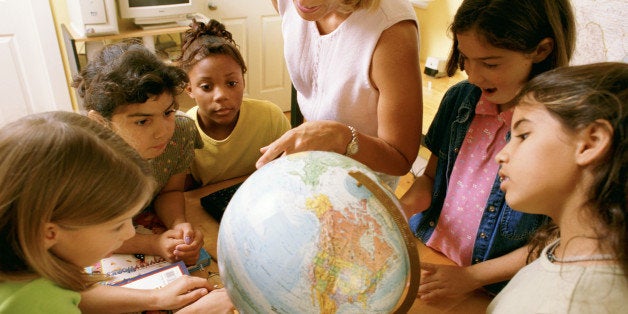
Overcoming gender inequality is absolutely critical to achieving the end of hunger and poverty. Data shows that countries that empower women tend to see lower rates of stunting (low height for age), the primary measure of chronic undernutrition. When women have equal access to education, and participate fully in decision making, they are the key driving force against hunger and poverty. Women with equal rights are better educated, healthier and have greater access to land, jobs and financial resources. Their increased earning power in turn raises household incomes.
Yet, as we head into the new development era of the Sustainable Development Goals, there is still a gender gap that compromises women's rights and hinders their empowerment. Indeed, women and girls make up more than half the world's population and are often more deeply impacted than men and boys by poverty, climate change, food insecurity, lack of healthcare and global economic crises. Even though it is primarily women who provide food for their families, they account for more than 60 percent of the world's hungry.
The question now is: How can we catalyze transformative change that can empower women and girls effectively and sustainably?
Fundamental to creating this change is empowering women in five key domains: agency, income, leadership, resources and time. We see that when women achieve in these areas -- and compared to men -- women are empowered. And empowered women benefit all of society.
These domains are the foundation of the Women's Empowerment Index, the tool we use to measure women's empowerment. Based on the International Food Policy Research Institute's Women's Empowerment in Agriculture Index, the Women's Empowerment Index is the first of its kind to measure women's empowerment across sectors and fills the gap in standard measurement approaches to directly capture women's inclusion.
Tracking progress in these areas is critical to developing programs that benefit women and girls. Achievement in these areas is a woman's pathway to empowerment.
Let's look at agency. When women have agency, they are able to make decisions and exercise control over resources. They are free to exercise these decisions without fear of repercussion. By enhancing women's control over decision making in the household, gender equality translates into better prospects and greater well-being of children, reducing poverty of future generations. A study by the International Food Policy Research Institute found a direct correlation between a woman's status and power in her household and the nutrition of her children.
Income is an important measurement of empowerment. When women have the ability to benefit from economic activities and enhanced access to markets and financial resources, their prosperity of their family increases. Evidence from countries as varied as Brazil, China, India, South Africa and the United Kingdom shows that when women control more household income -- either through their own earnings or through cash transfers -- children benefit as a result of more spending on food and education.
And what about resources? When women have access to the resources and skills they need to become equal participants in society, all of society benefits. If women farmers had the same access to resources as men, for example, the number of hungry in the world could be reduced by up to 150 million.
From the local to the global level, women's leadership and political participation are restricted -- by laws, patriarchal societies and a lack of access to resources and tools to participate on a meaningful level. Women are underrepresented as voters, as well as in leading positions, whether in elected office, civil society, the private sector or academia. This reality takes place despite their demonstrated abilities as leaders and agents of change. A woman's voice and her ability to become a leader in her community are fundamental to empowering women and society. Indeed, institutions better serve society when they are more representative of a range of voices. In India, for example, giving power to women at the local level led to greater provision of public services, such as water and sanitation, which mattered more to women.
The fifth domain critical to women's empowerment is time. When girls and women have time to pursue productive endeavors instead of domestic drudgery (time spent on hard, menial or dull work) all of society benefits. Women's engagement in such productive endeavors - such as education, for instance -- can have significant impacts on hunger and poverty. A cross-country study of developing countries covering the period 1970-1995 found that 43 percent of the reduction of hunger that occurred was attributable to progress in women's education.
By designing and adapting programs that focus on women's achievements in these areas -- and examining those achievements relative to the men in their communities -- we can target our actions and empower women to eliminate hunger and poverty once and for all.
This post is part of a blog series produced by The Huffington Post in conjunction with International Women's Day, celebrated on March 8, 2016. A What's Working series, the posts address solutions tied to the United Nations' theme for International Women's Day this year: "Planet 50-50 by 2030: Step It Up for Gender Equality." To view all of the posts in the series, click here.